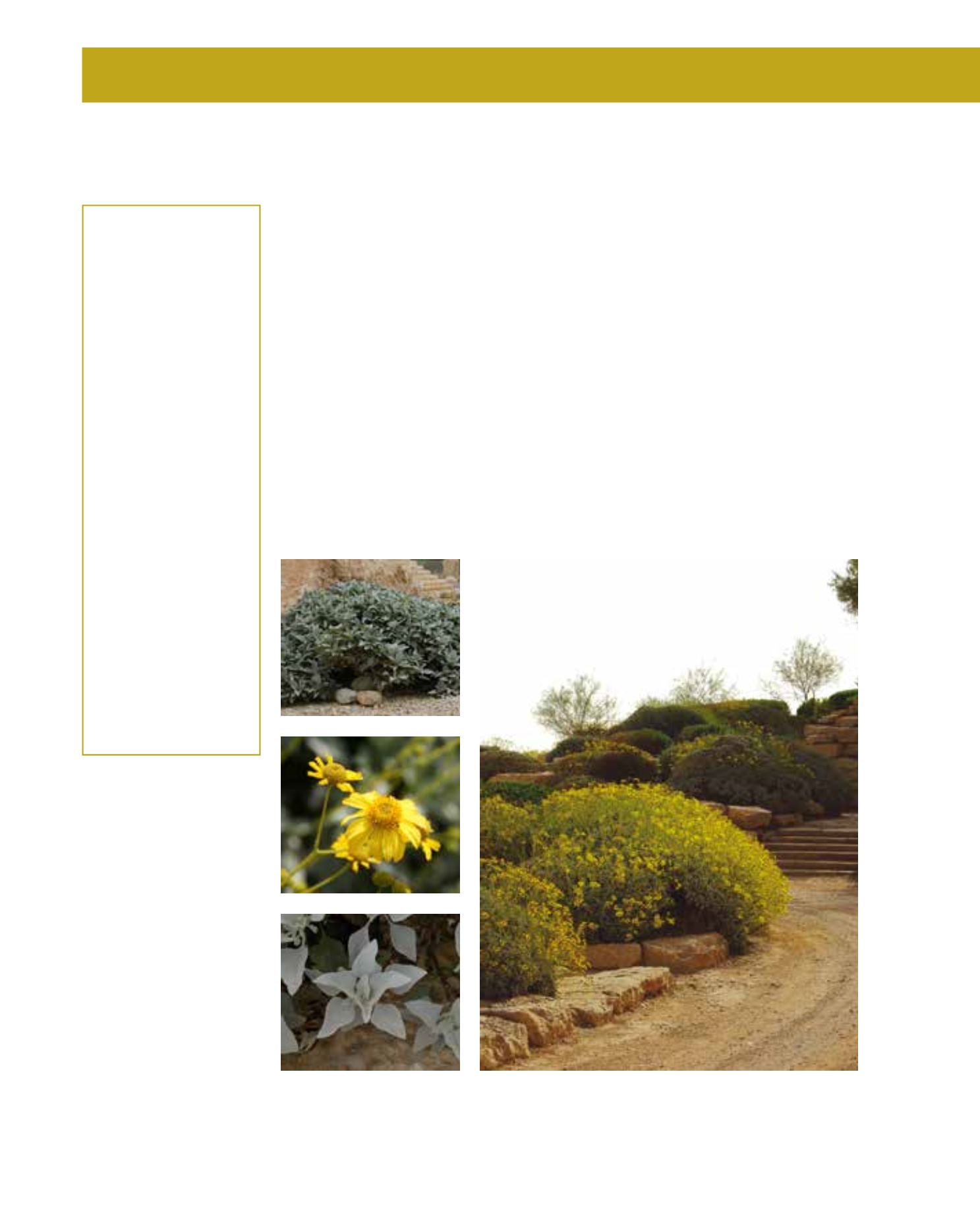

GENERAL
Origin
:
Mediterranean,
sub-tropical
Humidity
:
very arid, semi-
arid, semi-humid,
very humid
Propagation :
sowing and
pricking out,
cuttings
Maintenance :
moderate
CONDITIONS
Urban climate :
resistant
Dessication :
resistant
Stagnant water :
vulnerable
Irrigation
:
none
Salinity/ppm :
moderate (1500
ppm)
Hardiness
:
-3°C
SHAPE
Type
:
perennial,
sub-shrub
Height
:
0.6 m-0.9 m
Spread
:
0.9 m-1.5 m
Foliage
:
evergreen
FLOWER
Colour
:
yellow
Size
:
3 cm - 3.5 cm
Period
:
April - May
FRUIT
Type of fruit :
achene
Fruit size
:
0.4 cm
Toxicity
:
inedible
Encelia, or Brittlebush, is a woody perennial or sub-shrub that is native to the Sonoran and
Mojave deserts of northern Mexico and the southwestern USA. Seen up until now in only a few
locations in Arriyadh – there is a flourishing enclave at Kasr Tuwaiq in the Diplomatic Quar-
ter – it has great potential for widespread use. It grows from 60 to 90 cm high, and up to 150 cm
wide. The evergreen leaves are silvery light grey. The bright yellow, daisy-like flowers are 2 cm in
diameter, on long, thin stems above the foliage, as if they were floating above the shrub, which
they cover in spring. The Brittlebush is completely adapted to desert conditions. Fast growing,
especially after a wet winter, it needs nearly no irrigation once established. It will, however, die
out after some years when very dry, only to make a comeback after self-seeding. It is tolerant of
neither high salinity nor light frost, after which it will recover in spring. Encelia prefers full sun or
partially sunny locations, and sandy or rocky soil with good drainage. Propagation can be done
by seed or with cuttings. If self-seeding is not required, pruning of florescence after flowering is
advisable, and trimming of branches in autumn will encourage dense growth. Attractive planting
schemes with bright spots of colour can be created with E. farinosa as a small hedge, in grouped
or massed planting in public open spaces and urban areas, as well as in park or street median
planting and in pedestrian precincts and containers. It is an eye-catching plant in rock gardens.
135
Encelia farinosa,
Asteraceae
Incienso,
Brittlebush
















